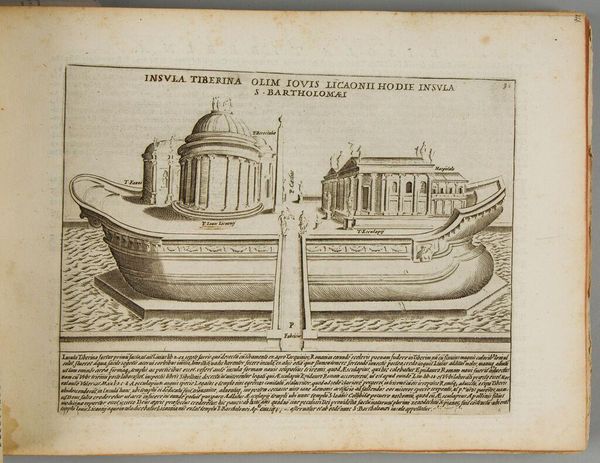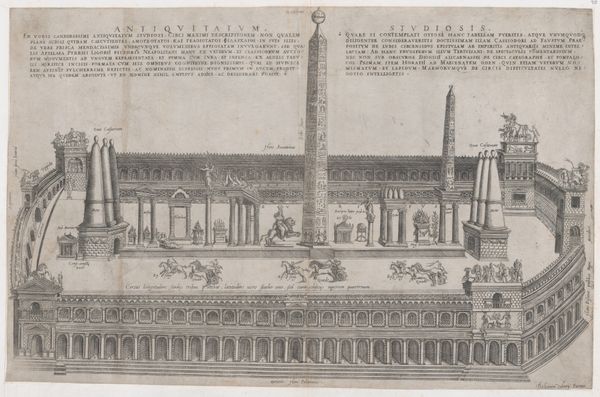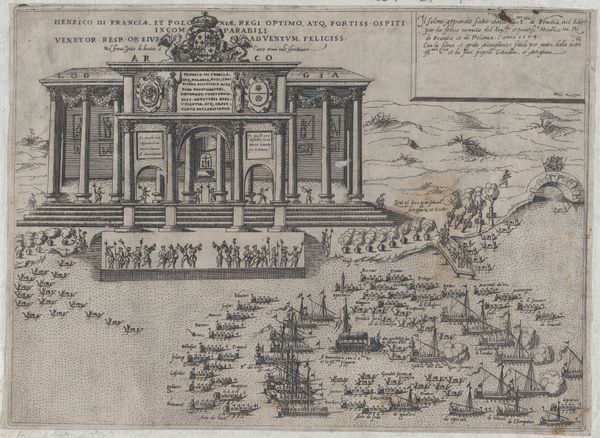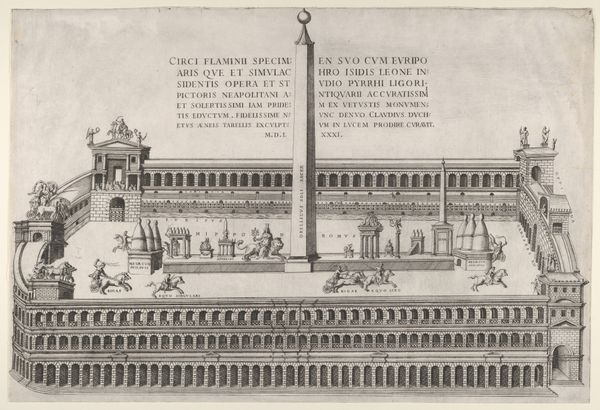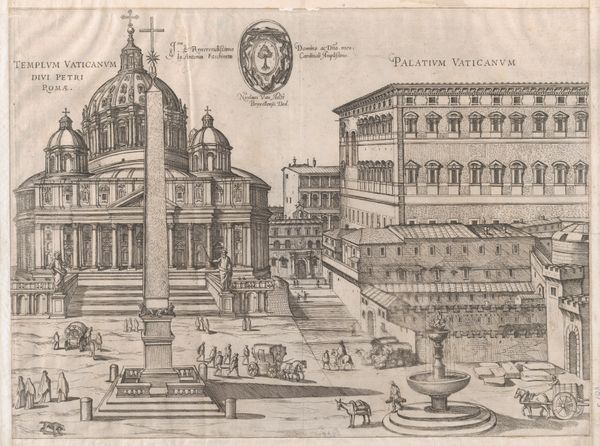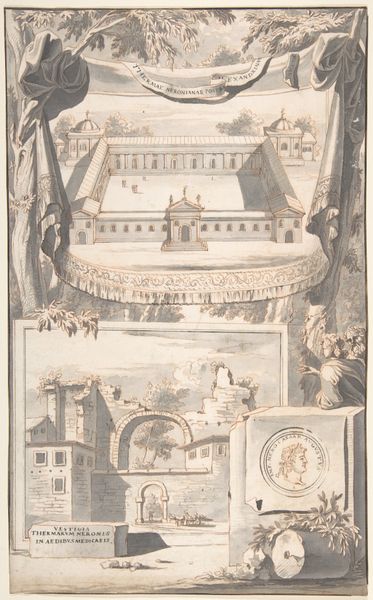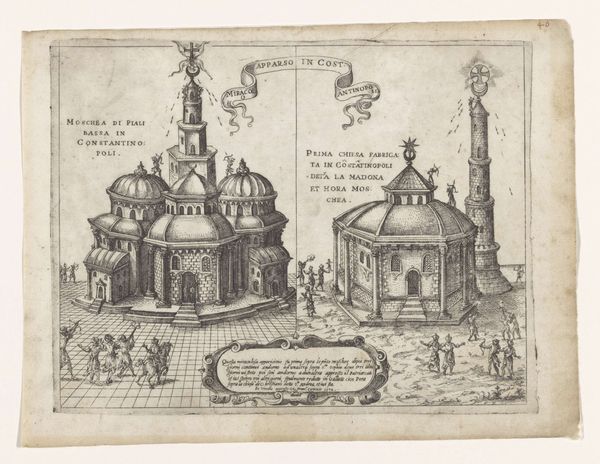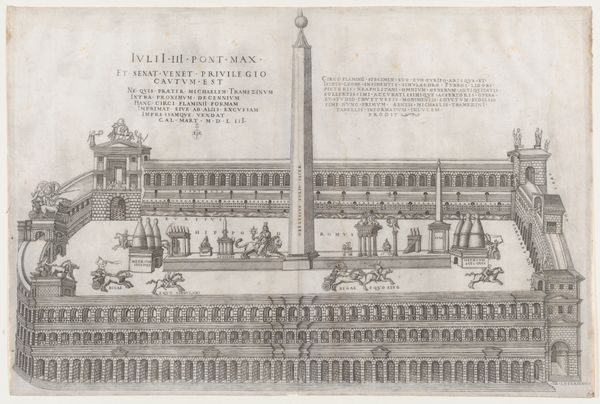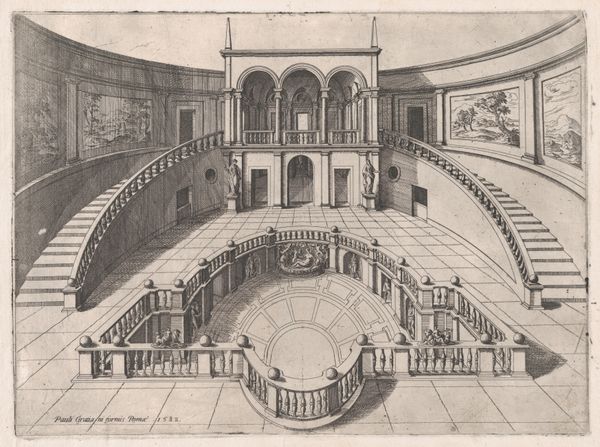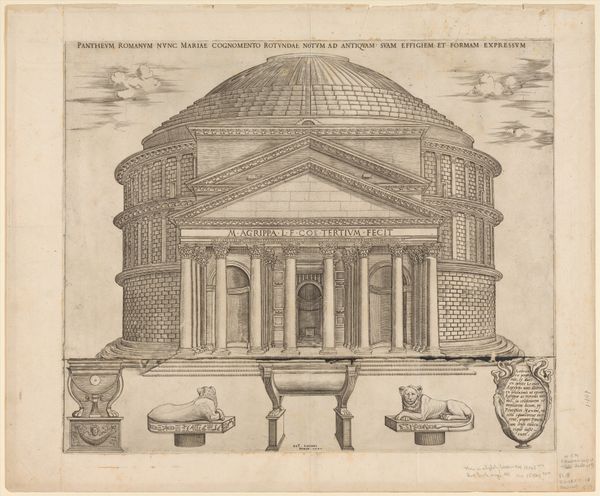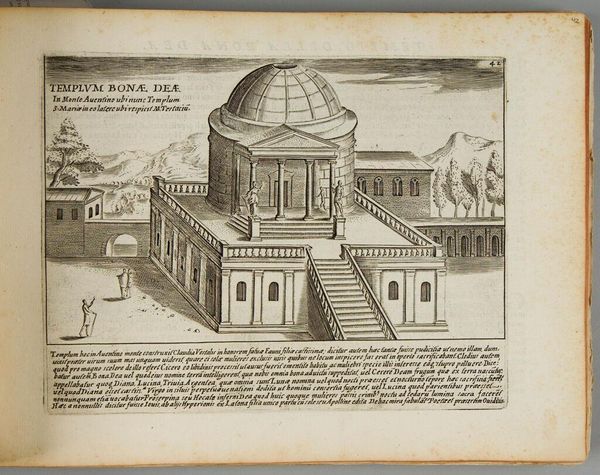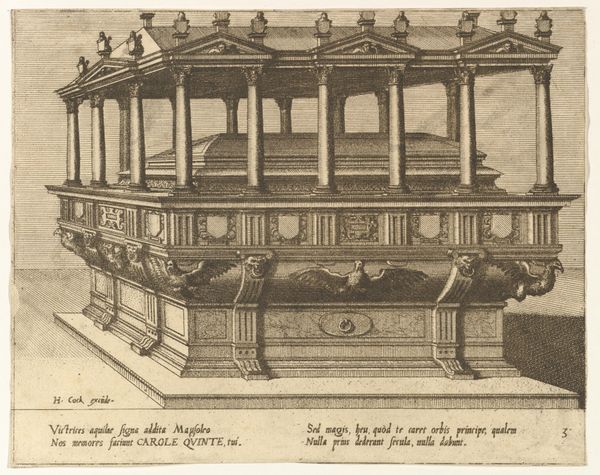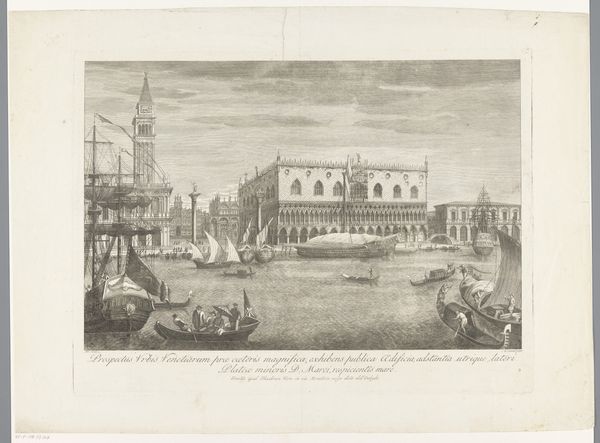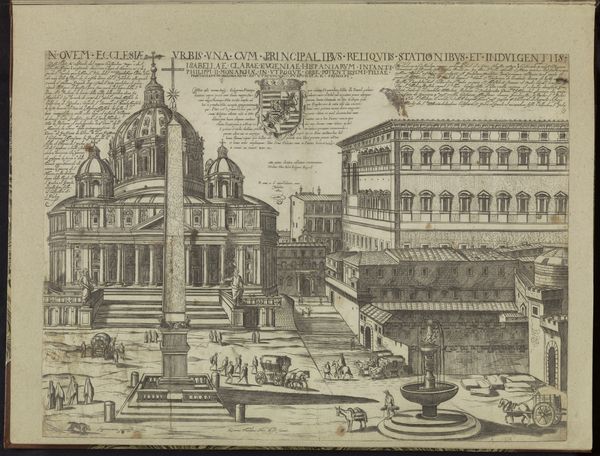
Speculum Romanae Magnificentiae: Temples on the Isle of Tiber 1582
0:00
0:00
drawing, print, engraving
#
drawing
# print
#
perspective
#
ancient-mediterranean
#
cityscape
#
engraving
Dimensions: sheet: 19 3/8 x 15 5/16 in. (49.2 x 38.9 cm)
Copyright: Public Domain
Curator: Look at this incredibly detailed engraving by Giovanni Ambrogio Brambilla, created in 1582. It’s titled "Speculum Romanae Magnificentiae: Temples on the Isle of Tiber." It offers a perspective view of the Tiber Island as two ships bearing classical temples. What are your immediate impressions? Editor: There’s an immediate feeling of reverence; the symmetrical layout coupled with those formidable, temple-topped 'ships' exude an air of ceremonial gravity. What’s most striking is the visual metaphor: the fusion of architecture with maritime vessels, blending themes of the sacred and the seafaring, it looks both static and ready to voyage. Curator: It's intriguing, isn't it? Brambilla created this as part of a series of prints aimed at documenting Roman antiquities and architecture. He wasn't just recording what was there but reconstructing how these sites may have appeared in their full, glorious context, emphasizing their relationship to Rome's imperial past. Editor: That reconstruction resonates with classical imagery; note the obelisk on the "ship" on the right—evoking a phallic monument while reinforcing the connection to ancient, pagan power. Given that obelisks were moved to Rome by emperors, we're looking at layers of superimposed authority, a conscious effort to build upon pre-Christian symbolic ground. Curator: I see the work, beyond the symbols, as advocating a very specific and intersectional notion of Rome at the time. As a depiction of the ancient city during the late Renaissance, this work revives a very politically charged conversation about Rome's historical and cultural preeminence. The island’s identity is defined not only by its classical buildings, but by their integration with symbols of maritime trade and empire, creating a visual representation of a historical nexus for social, political and economic transactions. Editor: Precisely, but look deeper into these composite images. Isn't there also a connection of illness and medicine? The Isola Tiberina housed a temple to Aesculapius, the Roman god of medicine. With temples traveling by “ship," this conveys something metaphoric beyond empire; that there's some inherent value for safe harbor during disease. The symbol gives shape to hope when the ship runs ashore... or stays anchored offshore. Curator: A very valid and insightful reading. Editor: It’s compelling how we can explore the depth of this engraving. These prints preserve memory through image, making both grand gestures and tacit allusions to values.
Comments
No comments
Be the first to comment and join the conversation on the ultimate creative platform.
